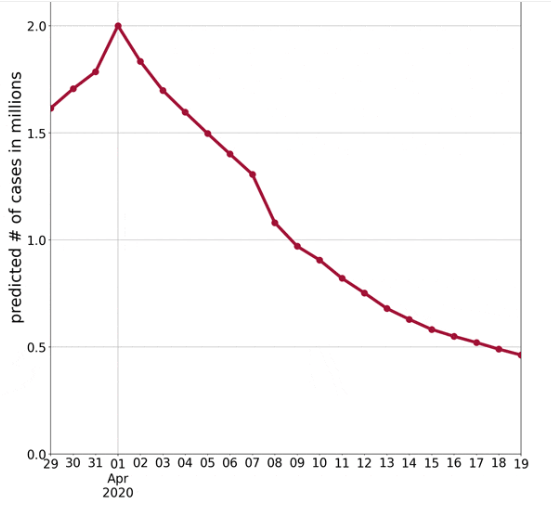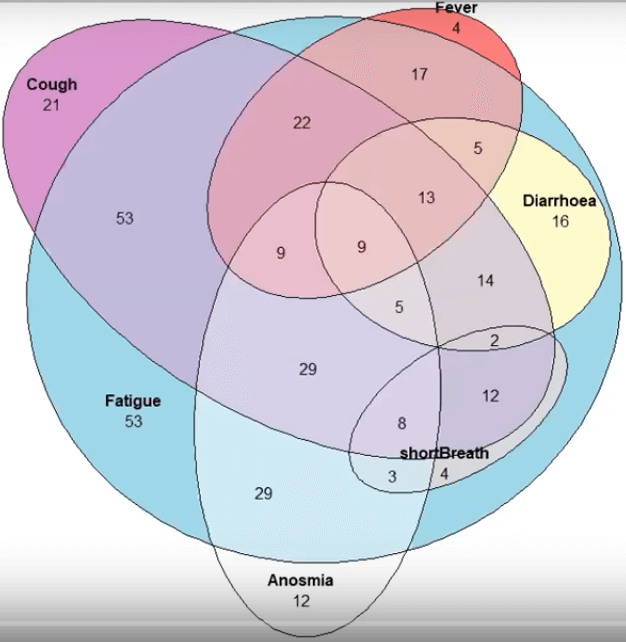 Warning: What you can read below is just my non-specialist (and altogether non-scientist) interpretation of information from the Covid-19 Symptom Tracker website and should be treated with caution - go to the website and watch the webinars for a much more reliable version.
Warning: What you can read below is just my non-specialist (and altogether non-scientist) interpretation of information from the Covid-19 Symptom Tracker website and should be treated with caution - go to the website and watch the webinars for a much more reliable version.
More than two and a half million users of the Covid-19 Symptom Tracker app are participating in the world's largest citizen science programme and helping researchers discover more about the virus, how it spreads, how to treat it and how to eliminate it. What they have discovered so far suggests that the lockdown in the UK has been effective in reducing the number of people who have symptomatic Covid-19. At its peak on 2nd April, epidemiologists working alongside machine learning scientists predicted that over two million people aged between 20 and 69 fell into this category, but since then the incidence has been falling steadily, down to around 460,000. There has also been a notable change in the locations of "hotspots" - London no longer appears to fit this description. Despite this, the researchers state clearly that it is far too soon to relax the lockdown.
 Predicted numbers of symptomatic Covid-19 carriers have declined sharply since 2nd April, appearing to indicate that the lockdown is having the desired effect
Predicted numbers of symptomatic Covid-19 carriers have declined sharply since 2nd April, appearing to indicate that the lockdown is having the desired effect
Covid-19 Symptom Tracker users require less than a minute a day to help build up a picture of how widespread the virus is in the UK, what are the most important symptoms, how it affects different geographical areas and different population groups. Once a day you send the researchers an update on your symptoms, or lack of them - it's just as important to know how many people aren't showing any symptoms.
Data from the smartphone and tablet app is analysed using machine learning and compared with data from a subset of people who have been tested for Covid-19. The sheer number of people inputting filters out "noise" and smooths out the inaccuracies associated with self-reporting. Numbers are predicted for local authority districts and London boroughs and for different age groups. Unfortunately, there are currently not enough app users aged 70 and above to provide reliable data for older people - so the project is keen to recruit people in this category. If they have difficulty using the app themselves, a relative or friend can input on their behalf.
![]()
The data has also yielded invaluable information about the symptoms shown by Covid sufferers - and it was found that watching out for "official" NHS symptoms, which are a fever and continuous cough, will miss some cases. Several symptoms - usually more than one at a time - can appear in various combinations - and loss of the sense of taste and smell (anosmia) and fatigue are both important clues.
 How various symptoms overlap in patients who tested positive for Covid-19
How various symptoms overlap in patients who tested positive for Covid-19
The findings of the study are updated every day and there are weekly webinars - online interviews with the most important participants. These are pitched at a level suitable for non-scientists like me and are very interesting. I recommend watching all of them, beginning with the one below.



